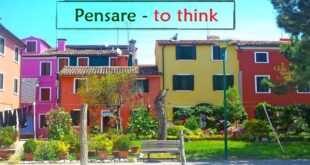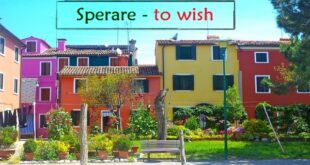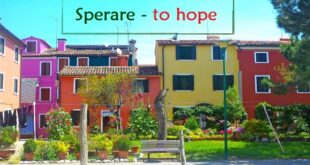Many, many Italian expressions use the verb pensare, which is most often translated as “to think.” You can imagine how this verb will come up often in conversation – with family and friends, of course, but also with acquaintances. In fact, the verb pensare has so many uses in Italian, many of which do not translate directly into English that we must really learn to think in Italian to master the use of this verb. But, once mastered, speaking with these phrases will truly help one to sound like a native! Because this verb is so important, we will give …
Read More »What I wish … for the holidays!
When an Italian wants to describe a hope or a wish he has, either for himself or someone else, he must use the verb sperare, and this is the verb that will be the topic of our blog today. Sperare works a bit differently from the “typical” Italian -are verb. To review what we’ve learned in our last blog about sperare: When using the verb sperare to express a hope or a wish one person or a group has for themselves, sperare must be followed by the preposition “di”. “Di” will often be followed by a verb in the infinitive …
Read More »What I hope…
I believe that commonly used phrases are the key for how we can all build fluency in any language in a short time. If we learn how to incorporate commonly used phrases when we speak Italian, we will be able to express important feelings — like our hopes — just as we do in our native language! This will help us with our “email Italian” as well. Read below and you will see what I mean. This post is the 15th in a series of Italian phrases we have been trying out in our Conversational Italian! Facebook group. If …
Read More »Adult language instructor Kathryn Occhipinti
Growing up in an Italian-American family, Kathryn Occhipinti experienced the Italian food, the emphasis on togetherness and the practicing of the Catholic faith. But she felt one piece of her heritage was missing: the language. Her grandparents and parents would converse in Italian, making it even more of a mysterious to her. After completing her medical training, she spent years studying the language, writing books and teaching classes in conversational Italian. She gears her efforts toward adult learners with a desire to travel to Italy. “Today, people are trying to understand where they came from, and the language was really …
Read More » Fra Noi Embrace Your Inner Italian
Fra Noi Embrace Your Inner Italian





